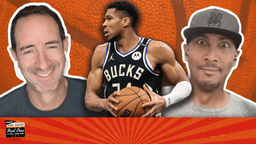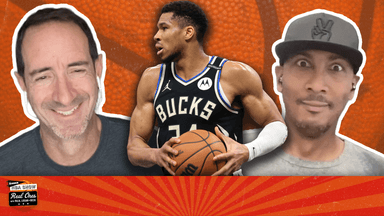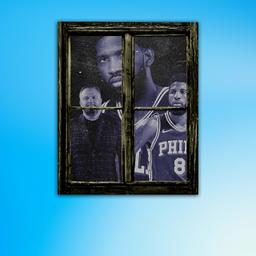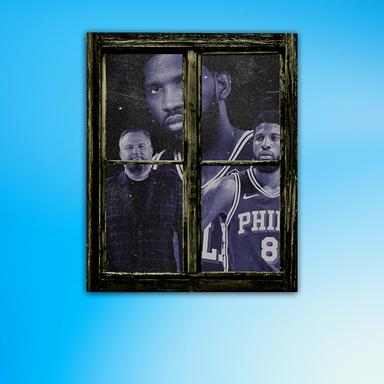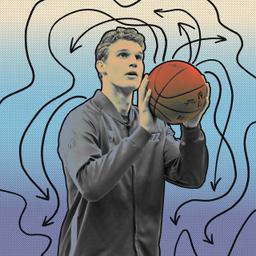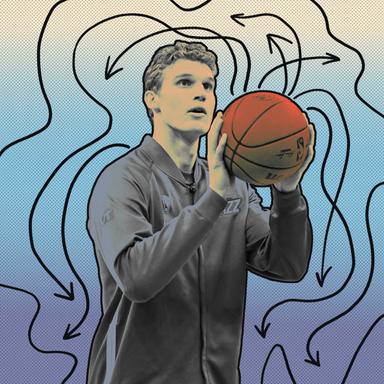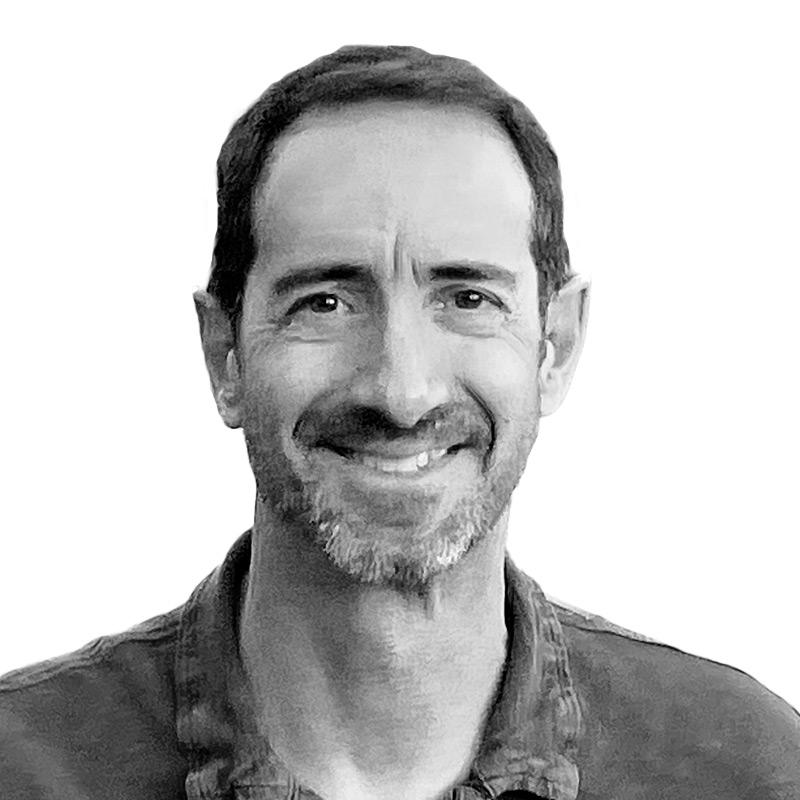A year ago, in our inaugural NBA Clarity Index, we set out to rank the league’s 30 teams not by their talent or potential, but by a more foundational element: clarity of purpose. To wit: Does your favorite team have an actual, identifiable plan?
As it turns out, sometimes the clarity isn’t, er, clear until actual results, uh, clarify it all.
And so we begin this second (now officially annual!) edition with a modest mea culpa. Looking back, we were perhaps a tad hasty and a tad too harsh in judging the Detroit Pistons in the summer of 2024.
We were baffled by Tobias Harris’s big contract. Puzzled by the swap of a young and cheap Quentin Grimes for an older and pricier Tim Hardaway Jr. We were deeply skeptical about the Pistons’ vision after yet another overhaul of the front office and coaching staff. We summarily sentenced them to the Fun-House Mirror Tier—the lowest, bleakest level of the Clarity Index—alongside fellow meanderers like the Chicago Bulls and the Toronto Raptors.
We humbly apologize for the error.
Not because the Pistons made a historic leap last season (though they did), but because we failed to recognize that the new front office, headed by Trajan Langdon, did indeed have a distinct, sensible plan for pushing this team forward. Harris and Hardaway proved to be exactly the sort of steady vets (and shooters) this young team needed. Ditto for Dennis Schroder, whom the Pistons acquired at midseason (long after our index was published). J.B. Bickerstaff proved to be the right voice on the bench.
The point is that the Pistons had a strong sense of where they were, where they wanted to be, and, most critically, how to get there. That’s the entire point of the Clarity Index—to rank teams by the strength (and transparency) of their vision. The Pistons didn’t deserve consignment to the Clarity basement, next to the likes of the (oof) Charlotte Hornets.
Before we get to this year’s index, a reminder: We’re not forecasting wins and losses here or grading offseason roster moves. We’re not concerned with a team’s on-court success so much as their intentions—their clarity of purpose.
As we noted in this space last year, the most important commodity in the NBA, other than talent, is conviction. Does the franchise have a clear plan? And are the owner and front office firmly committed to it? There are lottery teams following a sound blueprint and playoff teams with seemingly no blueprint at all.
If you’re a contender, did you improve or at least maintain your viability? If you’re a bad team, are you bad with a purpose—or bad out of sheer ineptitude? Have you identified a franchise star—and if not, do you have a plan to get one, via the draft or cap room?
If you’re a team lodged somewhere in the middle, are you clearly trying to move one direction or the other? The index generally rewards boldness and creativity and punishes inertia.
Finally, as we explained in the inaugural index: This is an observational and impressionistic exercise, based on what we can see, hear, and intuit about each franchise. But there are no advanced metrics or fancy formulas at work here. Your mileage may vary.
Without further ado, here’s our 2025 Clarity Index, again broken into six tiers. Arrows indicate whether a team rose or fell (and by how many tiers) from the 2024 index. Sideways arrows indicate no change.
Tier 1: The Ever-Clear Tier
These teams know exactly what they’re trying to do. And so do we.
Cleveland Cavaliers (⬆️3)
Denver Nuggets (⬆️2)
New York Knicks (↔)
Oklahoma City Thunder (↔)
Orlando Magic (⬆️2)
Washington Wizards (↔)
The Thunder are an absolute lock here—a defending champion with so much youth and upside (and draft capital) that they didn’t need to do a thing this summer. Their intentions are abundantly clear.
The Nuggets get a promotion to Tier 1 (up two tiers from last year) after an outstanding offseason in which they swapped Michael Porter Jr. for the more defensive-minded Cam Johnson and upgraded the bench with Jonas Valanciunas, Bruce Brown, and Tim Hardaway Jr. It marked the first time since their 2023 title that the Nuggets improved instead of standing still and bleeding talent.
The Knicks and Cavaliers, co-favorites in a depleted Eastern Conference, both made savvy moves to upgrade already formidable rosters: Cleveland, by adding Lonzo Ball and Thomas Bryant, New York, by adding Jordan Clarkson and Guerschon Yabusele.
The Magic earn a place here based on their bold trade for Desmond Bane and, to a lesser extent, their signing of Tyus Jones. The Bane deal cost them a lot—four first-round picks, one pick swap, and two rotation players—but it showed just how committed the Magic are to contending in the East. The index loves an all-in move.
Finally, we have the gleefully tanking Wizards, who make our highest tier for relentlessly pursuing lottery balls, draft picks, and cap room with zero shame. Yes, it’s ugly and painful, but the Wizards have a definable plan and are executing it just as well as, say, the Nuggets are executing their plan to win another title. That said, you can’t tank forever, so this might be the last time we credit the Wiz in this space.
Tier 2: The Side-View Mirror Tier
Objects (and obstacles) are closer than they appear.
Brooklyn Nets (⬇️1)
Golden State Warriors (⬆️3)
Houston Rockets (⬆️2)
Milwaukee Bucks (↔)
Minnesota Timberwolves (↔)
Like the Wizards, the Nets are committed to a multiyear tank job and the accumulation of youth, picks, and cap room. But Brooklyn gets a one-tier demotion for botching the “tank” part of this exercise. The Nets waited too long last season to trade Dennis Schroder, and they (foolishly?) hired a head coach, Jordi Fernandez, who insisted on getting the most out of his ragtag roster. They wound up with 26 wins, the sixth-worst mark in the league, which effectively ruined their odds of landing Cooper Flagg or Dylan Harper in the draft. Instead, they fell to eighth in the lottery and got Egor Demin. And instead of consolidating their five (five!) first-round picks, they used them all, taking multiple rookies with overlapping skill sets.
The Warriors have a simple mandate: Maximize Steph Curry’s final years as an elite player. They’ve left no ambiguity about that commitment—acquiring Jimmy Butler last February, adding Al Horford and DeAnthony Melton this summer, and, through it all, retaining dynasty pillars Draymond Green and coach Steve Kerr. The only blemish in the Warriors’ sense of clarity is the continued presence of Jonathan Kuminga, who doesn’t really fit and will inevitably be traded.
The Rockets made their intentions abundantly clear the moment they traded for Kevin Durant in June, giving up two rotation players in the process. They’re unmistakably all in. But the loss of Fred VanVleet (torn ACL) probably takes Houston out of title contention and exposes the one glaring hole in their plan: the lack of another reliable point guard.
We’ll give the Bucks credit for this much: They’re so committed (read: desperate) to keeping Giannis Antetokounmpo happy that they were willing to (a) waive-and-stretch Damian Lillard, clogging their cap for years to come, and (b) use the current cap room to sign Myles Turner to a hefty contract. Cool. Just one problem: The rest of the roster sorta blows, and Giannis knows it. Thus, all of the sourced reports (and passive-aggressive comments from Giannis himself) about his future in Milwaukee. The clock is ticking, and the picture grows murkier by the day.
The Timberwolves made the conference finals for a second straight spring and kept everyone they could afford to keep, ultimately losing just one key reserve, Nickeil Alexander-Walker, in free agency. Mike Conley Jr.’s age (38) and the lack of a clear successor at point guard are the only things keeping Minnesota out of the top tier.
Tier 3: The Frosted-Glass Tier
There’s a plan here, but it’s hazy.
Atlanta Hawks (⬆️3)
Detroit Pistons (⬆️3)
Boston Celtics (⬇️1)
Indiana Pacers (↔)
Philadelphia 76ers (⬇️2)
San Antonio Spurs (⬆️1)
Congrats to the Hawks and Pistons, two of our biggest risers from the 2024 Index, each climbing out of the bottom tier with some clarifying roster moves. Atlanta, after years of inertia, made a bold trade for Kristaps Porzingis and poached Alexander-Walker, instantly shoring up both the interior and perimeter defense—a necessity for a team built around Trae Young. So why aren’t the Hawks even higher? Because they’ve so far balked at giving a max extension to Young—an indication that team officials perhaps aren’t sure that they want to tie their fate to the four-time All-Star for another half decade.
Although the Pistons lost some key supporting players (Schroder, Hardaway, Malik Beasley), they moved swiftly to replace them with Caris LeVert and Duncan Robinson and now seem primed to compete for a top-four spot in the East. Lingering concerns about the fit of Jaden Ivey next to Cade Cunningham keep them from scoring higher here.
The Celtics and Pacers perhaps deserve their own subcategory—the Depressing Limbo Tier—after losing their respective franchise stars (Jayson Tatum and Tyrese Haliburton) to torn Achilles tendons. With Tatum out, Boston went into cost-cutting mode, parting with Porzingis, Horford, and Jrue Holiday. The Pacers let Turner walk rather than match the offer he got from Milwaukee. It’s hard to discern what either team hopes to achieve in the near term, other than tread water and hope for the best. (That Tatum is reportedly pushing to play this season only makes the picture in Boston hazier; if they were planning to be whole—and competitive—next spring, shouldn’t they have firmed up their weak frontcourt?)
Hoping for the best has become an unofficial mantra—and the de facto agenda—in Philly. We had the Sixers in the top tier a year ago, a nod to an aggressive offseason in which they landed Paul George, extended Joel Embiid, and seemed primed to rejoin the elite. Oops. As foolish as those investments look now given the health problems of both stars, the Sixers still get credit in the Clarity Index for their firm conviction and their willingness to spend. So why the two-tier demotion? Because they just used the third pick in the draft on a potential future star (V.J. Edgecombe), rather than trading for immediate help, and now they seem to be following—gulp—a Two-Timeline plan, with Embiid and George representing their present hopes and Edgecombe (20), Tyrese Maxey (24), and Jared McCain (21) forming their post-Embiid future.
By just about every other measure, the Spurs get high grades. They have a generational star in Victor Wembanyama, the reigning Rookie of the Year in Stephon Castle, and a potential star in rookie Dylan Harper. But they also made a huge trade for veteran De’Aaron Fox last season, then gave him a max extension ($229 million) this summer. How long can Fox, Castle, and Harper, all ball-dominant guards, coexist? Are the Spurs more focused on immediate success or developing their youth? It’s still a little hazy.
Tier 4: The Kaleidoscope Tier
Colorful and compelling, but a bit unsettled.
Dallas Mavericks (⬇️3)
L.A. Clippers (⬆️1)
L.A. Lakers (⬆️1)
Memphis Grizzlies (⬇️1)
Miami Heat (⬆️1)
Give Nico Harrison this much: The man has conviction. He firmly believed that trading Luka Doncic was the right thing to do, and he’s never wavered. He also admitted, quite bluntly, that swapping the 26-year-old superstar for the older Anthony Davis (now 32) and pairing him with Kyrie Irving (now 33) would shorten the Mavericks’ title-contention window. Not the wisest agenda, but certainly a clear one. The problem is that the Mavericks then lucked into the no. 1 pick in the draft, took 18-year-old Cooper Flagg, and now find themselves straddling two eras. The smart (and clarifying) move would have been to trade Davis, let Irving (out with a torn ACL) leave in free agency, and reset around Flagg. But they kept Davis and handed Irving a $119 million extension. Now the plan seems to be: Hope the teenager blossoms soon and pray the old guy’s ACL heals quickly.
The Clippers have a clear-ish plan: They’re hoarding older vets in the present—signing Chris Paul, Bradley Beal, and Brook Lopez to support Kawhi Leonard and James Harden—and hoarding cap room in the future (nearly every contract expires by 2027). What’s the goal in the near term? Selling tickets at their new arena, mostly. Their future is made murkier by the possibility of losing draft picks if the league finds them guilty of cap circumvention.
Acquiring Doncic is the kind of all-in move that would normally merit Tier 1 recognition for the Lakers. But he’s paired with a 40-year-old LeBron James, who is (a) on an expiring contract, (b) irked by the team’s long-term, Luka-centric focus, and (c) already hurt. Are the Lakers trying to win another title before James retires or leaves? The Luka acquisition would suggest yes. But the Lakers’ uninspiring summer—adding Deandre Ayton, Jake LaRavia, and Marcus Smart, while losing Dorian Finney-Smith—suggests otherwise.
The Grizzlies clearly and intentionally took a step backward when they traded Bane to Orlando for a bundle of draft picks this summer. They still have two high-level talents in Ja Morant and Jaren Jackson Jr. and some promising young players, but they’re a fringe playoff team at best. And they remain tied to Morant, whose health and overall reliability seem perpetually in doubt.
You can’t blame the Heat for trading Jimmy Butler—the phrase “irreconcilable differences” comes to mind here—but it left Miami without a north star. It’s hard to have clarity in the NBA without a true franchise star. But the Heat nevertheless rise one tier for their consistency and conviction in not tolerating Butler’s antics and for valuing #HeatCulture over everything.
Tier 5: The Stained-Glass Tier
Attractive at a glance, headache inducing if you stare too long.
Charlotte Hornets (⬆️1)
Phoenix Suns (⬇️3)
Portland Trail Blazers (⬆️1)
Utah Jazz (⬆️1)
The most generous portrayal of the Hornets would be to call them a tanking team in pursuit of multiple high picks, akin to the Nets and Wizards. But here at Clarity Index HQ, we make a distinction between the intentionally uncompetitive and the merely inept. For years, through multiple administrations, the Hornets have mostly fallen into the latter category. It has netted them some decent talent in the draft—LaMelo Ball, Brandon Miller, and new rookie Kon Knueppel—but the Hornets still don’t have a clear no. 1 (Ball isn’t it), and they haven’t cracked 30 wins in any of the last three seasons. They might not this season, either.
The Suns had a moment of clarity this summer, recognizing that it was finally time to end their ill-fated Big Three experiment and jettison both Durant and Beal. But the return for Durant (Jalen Green and Dillon Brooks) was lackluster at best. And they still have 28-year-old Devin Booker—now signed to a potentially regrettable $145 million extension—so they’re not exactly rebuilding. They’ve traded or swapped rights to all of their first-round picks for the next three years. Their best path forward is the one they’ve refused to entertain: trading Booker.
We promoted the Trail Blazers one tier for their decidedly bold summer. They waived Ayton to improve their locker-room vibes. They stunned the league with their selection of passing wizard Yang Hansen. They landed Holiday and brought back the injured Dame Lillard to inject a little wisdom into their precocious core. They still don’t have an identifiable star to build around, but these are quality moves around the edges.
The Jazz took way too long to embrace tanking—and when they finally did, it was so brazen it got them fined. Still, they move up one tier for at last acknowledging their futility. Now they just need to trade Lauri Markkanen, who (a) is too talented to let them fully tank, (b) is not talented enough to make them a playoff team, and (c) would clearly be better off elsewhere.
Tier 6: The Fun-House Mirror Tier
Confusing, freaky, and occasionally entertaining.
Chicago Bulls (↔)
New Orleans Pelicans (⬇️2)
Sacramento Kings (⬇️3)
Toronto Raptors (↔)
We’re tempted to rename this the “Chicago Bulls Tier” because no NBA franchise is as consistently baffling and maddeningly complacent. We’d credit them for finally moving on from the DeMar DeRozan–Zach LaVine era, but they’re still clinging to Nikola Vucevic and still showing no indication that they have any particular aspirations, other than making the play-in tournament every April.
Since last season, the Pelicans have replaced their GM and made a series of head-scratching trades, none of which are getting them any closer to respectability. With a little health luck (hello, Zion), the Pels might actually be fun and competitive. There are good pieces here, just no coherent plan.
Remember that clunky DeRozan-LaVine combo that kept the Bulls in perpetual mediocrity? It now resides in Sacramento, ensuring the Kings will live in the same perpetual mediocrity. You know who’s not in Sacramento? The 2023 Executive of the Year (Monte McNair), 2023 Coach of the Year (Mike Brown) and 2023 Clutch Player of the Year (Fox), all of whom were ejected last season. It seems like only a matter of time before Domantas Sabonis, Fox’s former costar, asks out of this mess. (Prediction: The Kangz are gonna be in this tier for many years to come.)
Finally, we have the Raptors, whose post-championship, post-Kawhi grace period ran out long ago. They’ve missed the playoffs three straight seasons and seem no closer to figuring out how to build around Scottie Barnes. Even with all of that, the decision in June to fire team president Masai Ujiri—easily the best executive in franchise history—seemed hasty and ill-considered, leaving fans to rightfully wonder when the Raps will be relevant again.
